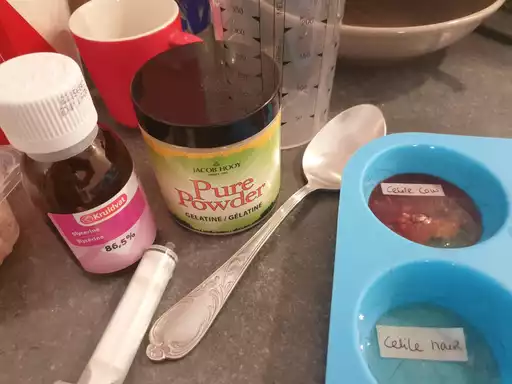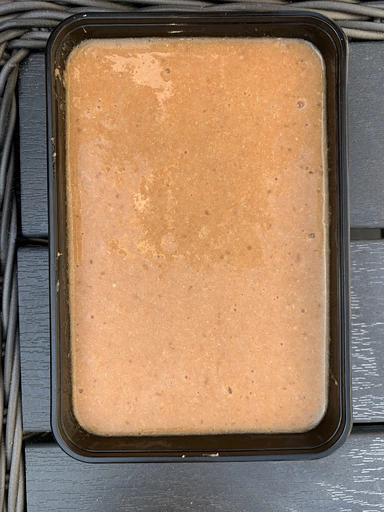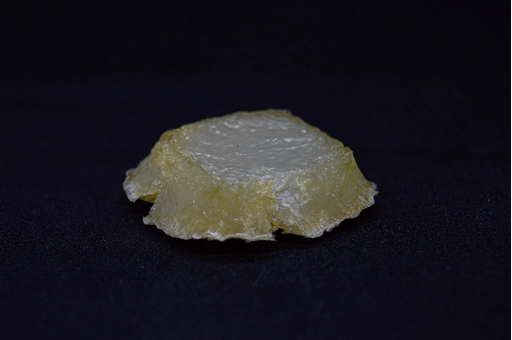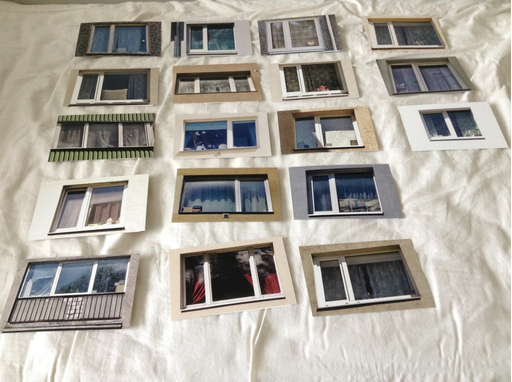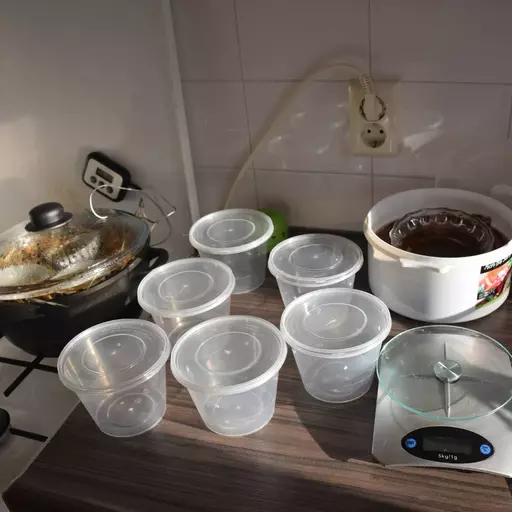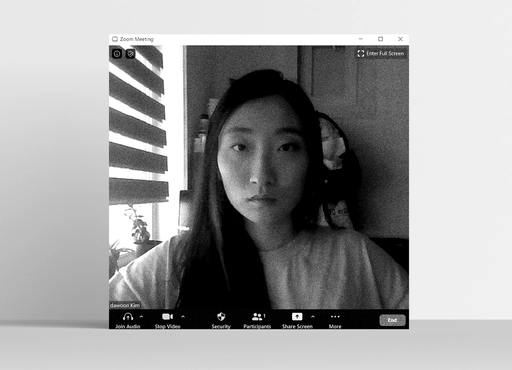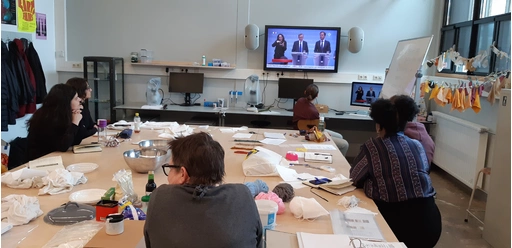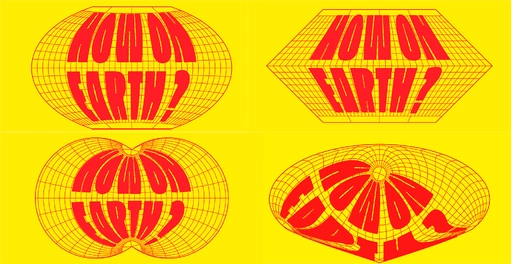
Notes on film program How On Earth and online exhibition “Living Matters”
blog by Rana Ghavami – 23 jun. 2020topic: Rethinking Anthropocene
What was it like to have encounters and gatherings at school? I had to dig deep in order to recount how I felt the first time I visited AKI Enschede for the film program How On Earth. Last year September, on my way to the smallest art academy in The Netherlands, which is housed in a former textile factory and close to the German border, I reflected upon the history of AKI Enschede, its proximity to cities like Amsterdam, Rotterdam or The Hague, how it is known in the ArtEZ community for its somewhat anarchist reputation.
The first thing I noticed after my arrival - as I was surrounded by some students in lush and joyful looks, and in front of a pile of clothes for a clothing-swap party in the middle of the hallway on the first floor - was the open, unflustered, and focused vibe amongst the students and staff-members.
It was precisely this atmosphere that eased me and Agnieszka Anna Wołodźko into introducing the course program Living Images along with the film program. I still remember how I was captivated by the persuasive diligence of Agnieszka, who in the meantime was telling the students what they could expect in this course. In the span of eight months Living Images would introduce students to an alchemistic approach towards art and design, and challenge them to reflect upon how “making something visible or invisible is an ethical and ecological act.” This would be further strengthened and encouraged by the movie nights, where we would come together to discuss the ways in which strategies of representation and visuality are deployed in films and artistic practices.
One of our aims for this film program was to examine how (visual) perception affects how we inhabit this world and the stories we tend to tell and trust. Our intention was to reflect upon the allure and use of single diagnosis of “the world” or any other multifaceted and temporal concepts such as “human,” “climate,” and “crisis,” and to draw lines between such simple one-dimensional stories and the moral judgements about these concepts.
Back then, we could have never known how this course and the film program How on Earth would take a different turn due to a global pandemic that was caused by a virus, and in turn, how this pandemic deepened the detrimental life conditions of black, indigenous and migrant communities who were already suffering from corrupt political decisions and economic injustice–and how in spite of these conditions a black uprising ignited in the world.
We could not have known how we were already engaging with matters that laid ahead of us - “in the future.” Over the course of time, within the confines of our housing conditions, the stories we told back then have changed; what seemed somewhat abstract, such as this claim “how making something visible or invisible is an ethical and ecological act” has become tangible and palpable in ways we couldn’t and perhaps did not want to imagine. What’s Coronavirus about? What’s the story of a virus that is invisible to us? Just think about all the stories we tell each other, and listen to and read every day. And how, with each of these accounts, we try to make visible what this virus is, and what it does. If anything, we have witnessed how giving one account of this virus is not enough; how our lives cannot depend on one single diagnosis, no matter how tempting a single story can be. The story of Coronavirus is not just about a virus that kills. It’s also about whose lives are threatened, why black lives are threatened while others are not, and how these unequal conditions are created and upheld by political decisions and brutal indifference. Telling stories anew; sounds alluring, easy, simple. What happens when a story pierces through “modern life” and erupts life as we know it at this school? What does it take to study and work with “living matters”? I know you are exhausted from this screen, but these stories told by students of AKI Enschede are worth to be told and read with red eyes.
The first thing I noticed after my arrival - as I was surrounded by some students in lush and joyful looks, and in front of a pile of clothes for a clothing-swap party in the middle of the hallway on the first floor - was the open, unflustered, and focused vibe amongst the students and staff-members.
It was precisely this atmosphere that eased me and Agnieszka Anna Wołodźko into introducing the course program Living Images along with the film program. I still remember how I was captivated by the persuasive diligence of Agnieszka, who in the meantime was telling the students what they could expect in this course. In the span of eight months Living Images would introduce students to an alchemistic approach towards art and design, and challenge them to reflect upon how “making something visible or invisible is an ethical and ecological act.” This would be further strengthened and encouraged by the movie nights, where we would come together to discuss the ways in which strategies of representation and visuality are deployed in films and artistic practices.
One of our aims for this film program was to examine how (visual) perception affects how we inhabit this world and the stories we tend to tell and trust. Our intention was to reflect upon the allure and use of single diagnosis of “the world” or any other multifaceted and temporal concepts such as “human,” “climate,” and “crisis,” and to draw lines between such simple one-dimensional stories and the moral judgements about these concepts.
Back then, we could have never known how this course and the film program How on Earth would take a different turn due to a global pandemic that was caused by a virus, and in turn, how this pandemic deepened the detrimental life conditions of black, indigenous and migrant communities who were already suffering from corrupt political decisions and economic injustice–and how in spite of these conditions a black uprising ignited in the world.
We could not have known how we were already engaging with matters that laid ahead of us - “in the future.” Over the course of time, within the confines of our housing conditions, the stories we told back then have changed; what seemed somewhat abstract, such as this claim “how making something visible or invisible is an ethical and ecological act” has become tangible and palpable in ways we couldn’t and perhaps did not want to imagine. What’s Coronavirus about? What’s the story of a virus that is invisible to us? Just think about all the stories we tell each other, and listen to and read every day. And how, with each of these accounts, we try to make visible what this virus is, and what it does. If anything, we have witnessed how giving one account of this virus is not enough; how our lives cannot depend on one single diagnosis, no matter how tempting a single story can be. The story of Coronavirus is not just about a virus that kills. It’s also about whose lives are threatened, why black lives are threatened while others are not, and how these unequal conditions are created and upheld by political decisions and brutal indifference. Telling stories anew; sounds alluring, easy, simple. What happens when a story pierces through “modern life” and erupts life as we know it at this school? What does it take to study and work with “living matters”? I know you are exhausted from this screen, but these stories told by students of AKI Enschede are worth to be told and read with red eyes.
related content
blog – 24 jun. 2020
A story by Anivia Beylard
Part of Living Matters non-exhibition
blog – 24 jun. 2020
A story by Celile Demir, who asks: What does it mean to be an organism?
Part of Living Matters non-exhibition
blog – 24 jun. 2020
A story by Eric Bari, who asks: How can we rethink/re-use our wastage to create resources to gain knowledge, as well as understanding the value of our surroundings?
Part of Living Matters non-exhibition
blog – 24 jun. 2020
A story by Garrett Szmyd, who asks: How do humans perceive life and the environment?
Part of Living Matters non-exhibition
blog – 24 jun. 2020
A story by Rojin Tavassoli, who asks: How we can bring the past and future into life? How bio-art can help in this process?
Part of Living Matters non-exhibition
blog – 24 jun. 2020
A story by Talitha Fruneaux, who asks: Is it OK to play with life?
Part of Living Matters non-exhibition
blog – 24 jun. 2020
A story of Dawoon Kim, who asks: What is the new biological me?
Part of Living Matters non-exhibition
refered to from:
blog Agnieszka Anna Wołodźko – 24 jun. 2020
